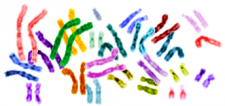Gene Editing: The Dual-use Conundrum
By Janet Phelan,
New Eastern Outlook
| 07. 11. 2016
Dual-use may be best understood by considering the functions of a knife. Used against an enemy, a knife can be deadly. In the hands of a skilled surgeon, a knife may be life-saving, removing a gangrenous appendage or excising a cancerous mass.
Wikipedia defines dual-use this way: “In politics and diplomacy, dual-use is technology that can be used for both peaceful and military aims. More generally speaking, dual-use can also refer to any technology which can satisfy more than one goal at any given time.”
Behind the debate over the Iran nuclear deal lurked the dual-use issue. On the one hand, there were those claiming that Iran had every right to develop nuclear power in pursuit of peaceful aims. In the other camp were those who maintained that possession of nuclear technology was a path towards developing nuclear weapons, and in the hands of a regime hostile to America’s purported friend and ally, Israel, was too dangerous to be allowed to manifest. Dual-use has implications reaching beyond nuclear science. Those watching the development of what is termed “biodefense” are uncomfortably...
Related Articles
By Grace Won, KQED [with CGS' Katie Hasson] | 12.02.2025
In the U.S., it’s illegal to edit genes in human embryos with the intention of creating a genetically engineered baby. But according to the Wall Street Journal, Bay Area startups are focused on just that. It wouldn’t be the first...
Several recent Biopolitical Times posts (1, 2, 3, 4) have called attention to the alarmingly rapid commercialization of “designer baby” technologies: polygenic embryo screening (especially its use to purportedly screen for traits like intelligence), in vitro gametogenesis (lab-made eggs and sperm), and heritable genome editing (also termed embryo editing or reproductive gene editing). Those three, together with artificial wombs, have been dubbed the “Gattaca stack” by Brian Armstrong, CEO of the cryptocurrency company...
Alice Wong, founder of the Disability Visibility Project, MacArthur Genius, liberationist, storyteller, writer, and friend of CGS, died on November 14. Alice shone a bright light on pervasive ableism in our society. She articulated how people with disabilities are limited not by an inability to do things but by systemic segregation and discrimination, the de-prioritization of accessibility, and the devaluation of their lives.
We at CGS learned so much from Alice about disability justice, which goes beyond rights...
By Adam Feuerstein, Stat | 11.20.2025
The Food and Drug Administration was more than likely correct to reject Biohaven Pharmaceuticals’ treatment for spinocerebellar ataxia, a rare and debilitating neurodegenerative disease. At the very least, the decision announced Tuesday night was not a surprise to anyone paying attention. Approval...




